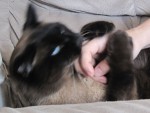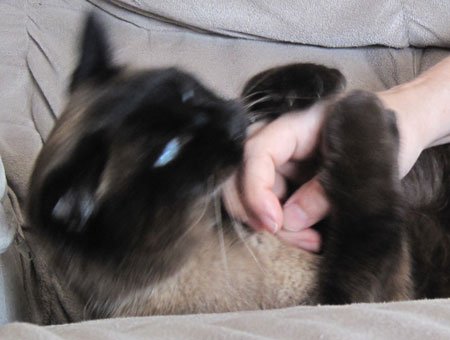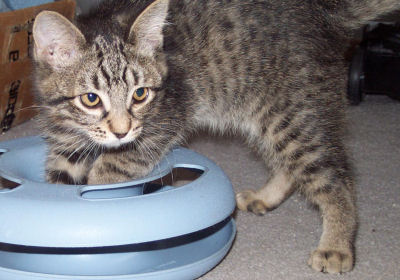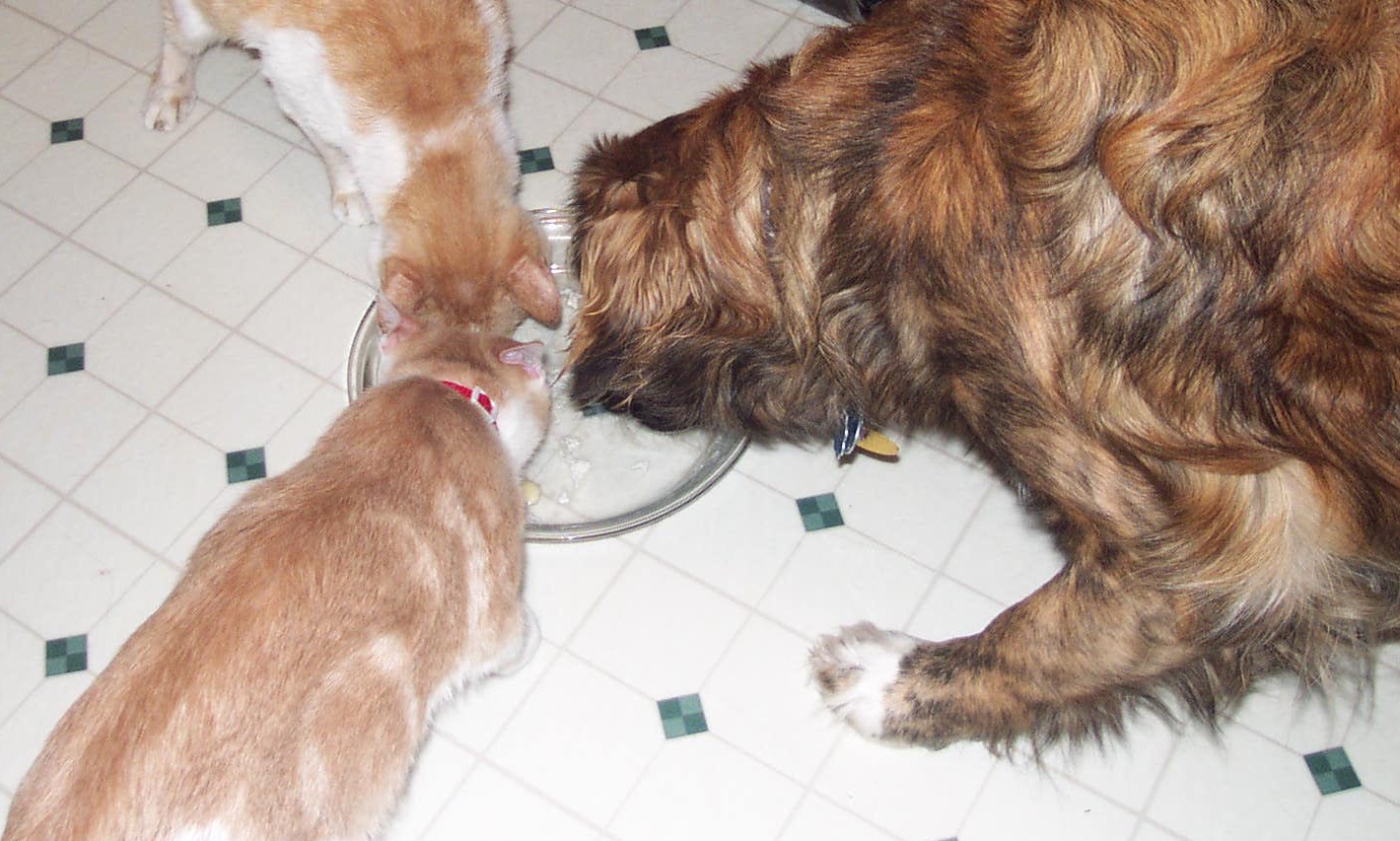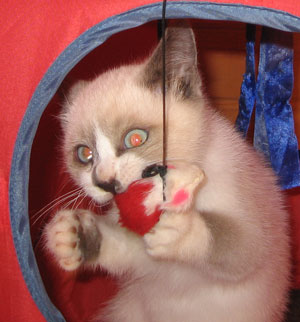We’ve all seen examples of the “perfect” cat, who will curl up with you on the couch and let you pet and brush him for hours, and who sleeps peacefully at the foot of your bed all night long.
In reality, cats are individuals just like their humans, and they have their own ideas about… well, just about everything!
One of our fabulous recent cat adopters has a question about their new family member’s “biting” behavior:
“…how can we keep her from biting when she gets overly excited. At night when we are sleeping she will jump up and bite our hands to wake us up to pet her, or if she’s sitting by us and we are petting her, she gets so excited that she will randomly attack our hand… why does she do this and how can we make her stop?”
There are two separate issues at play (no pun intended). First, the waking up for play and attention:
Although we all try to get our cats to adjust to the human sleep schedule, in nature, cats are nocturnal. Many cats adopted from shelters have embraced their nocturnal nature by the time they find a forever home, and it can take some time and discipline to get them to accept the humans’ idea of sleep time.
The most important thing in this situation is to not reward the cat’s unwanted nighttime behavior by giving them what they want. At the cat’s first attempt to wake you, say “No!” and push the cat gently away, then tuck those arms under the covers so she can’t continue to nip at your hands.
The next “escalation” of nighttime training can be the addition of a spray bottle of water within easy reach of the bed – this works best if there are two people, so that the one who is not being approached to play can squirt kitty “out of nowhere” so she doesn’t associate the squirting with a person but with her own behavior. You want her to learn “when I wake up my person, it rains on me” rather than “my person is a mean old water monster”! Some people have success with this method but choose to replace the squirt bottle with a burst of compressed air. Whichever deterrent you prefer, it is important to use it only while the cat is actively nipping or pawing to wake you up; you don’t want to teach the cat to avoid the bed, just to avoid the unwanted behavior.
If in-bed deterrents aren’t appealing to you, or don’t work, the final suggestion is to remove the cat from the bedroom the first time she wakes you. Just calmly say “No” as you pick kitty up and place her outside the bedroom door, which you then close. The first nights you try this, you may be subjected to meowing, pawing at the door, and rattling of the doorknob… earplugs can work wonders.
Cats are more trainable than many people think – they are usually quite smart, and will make the connection between “I nip my sleeping person’s hand” and “I am – spritzed, or puffed, or evicted” fairly quickly. The key is consistency – NEVER reward unwanted behavior by giving the cat what they want (which is generally attention), and ALWAYS use the same techniques to deflect or deter the unwanted nighttime wake-up call.
Now, on to the second issue – biting during petting or grooming sessions:
This sort of biting is generally called “overstimulation biting” and occurs when the cat’s humans don’t understand or pay attention to the cat’s body language. In simplistic terms, think of petting or grooming as an activity that fills up the cat’s affection cup. Once the cup is full, the cat becomes annoyed at the extra affection spilling out over the top, and begins to say “enough already” by some or all of these signals: flattened ears, swishing tail, twitching back, narrowed eyes, dilated pupils. Once you see any of those signs, it’s time to calmly disengage from petting or grooming, to give kitty time to absorb the affection stored in the cup.
The most common areas of the cat that lead to overstimulation are the back/tail and the belly; they usually will tolerate more petting around the head and neck, and chin scritches are welcome too.
If you want to increase your individual cat’s tolerance so you can have longer petting or grooming sessions, it can be done with some patience and dedication.
First, you need to find out how long on average you can pet your cat before she starts showing any signs of overstimulation. Let’s say she makes it for 3 minutes before that first tail twitch starts. Now that you know she has a 3-minute tolerance, spend several days petting her for only 2.5 minutes, so your petting sessions always end with her happy and content.
After several days of successful petting sessions, you can gradually increase the length of time for the sessions – add 20 or 30 seconds each day or two so she learns to tolerate gradually longer sessions. If she does get overstimulated and bite, say “No bite!” and gently remove your hand and end the petting session; go back to the shorter length for a few more days before gradually increasing the time again.
There are also cats who are simply “love nippers” – they really can’t help it, they want to gently grab a little bit of their favorite human between their teeth, without any overstimulation issues at all. While it seems a bit weird, love nips are actually a great compliment – your kitty adores you! Just use the training tips to let her know humans don’t like bites, and she’ll get the hint.
Here is my cat, George, letting me know it’s time to STOP:
Images copyright © 2011 Sean Gillen, available under CC-BY-SA 3.0 Unported.
